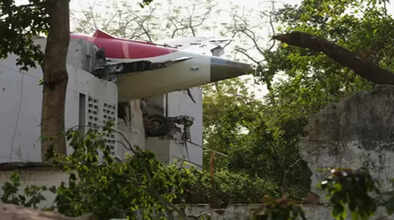Air India Plane Crash: What happened in the last moments...every secret will be revealed, DVR recovered from the debris; know about it..

The Gujarat Anti-Terrorism Squad (ATS) on Friday recovered a digital video recorder (DVR) from the wreckage of the Air India plane that crashed in Ahmedabad. An ATS personnel told reporters that 'This is a DVR, which we have recovered from the debris. The FSL team will come here soon.'
The DVR can provide important information about the last moments of the crashed flight. The recovered DVR would have important CCTV footage from the surrounding areas or cockpit data, which would help in finding out what happened in those last moments before the crash. Every byte of data matters and is important.
What is DVR? (Digital Video Recorder)
In the aviation sector, the digital video recorder (DVR) is part of the aircraft's onboard recording system, often used along with the flight data recorder (FDR) and cockpit voice recorder (CVR). These are commonly called 'black boxes'. While the FDR records technical flight data and the CVR cockpit conversations, the DVR, if present, records video feeds from cameras inside the cockpit or sometimes external to the aircraft.
On modern flights, especially helicopters, and military or experimental planes, DVRs are installed to capture real-time video of the instrument panel, pilot behavior, and sometimes the external environment. These video recordings may include pilot actions, conditions outside the aircraft, and cockpit reactions during an emergency.
Investigators recover all black boxes, including the DVR, when an aircraft crashes. These devices are typically impact-resistant and fireproof, surviving extreme conditions such as a high-speed impact or a fire resulting from a crash.
The DVR is important in an investigation because it visually supports the recorded data of the FDR and CVR. Voice and data recordings provide important information such as engine performance, altitude, airspeed, and cockpit conversations. The DVR also clearly shows what the pilot saw and did, such as control movements, warning lights on the dashboard, or visibility conditions from the windows. These details are especially helpful in complex cases where the cause of the crash is unclear or the plane crashes suddenly without radio communication.
For example, if the pilot is disoriented or distracted, the DVR can show this from their behavior or eye movements. If there was a malfunction in the instruments, the DVR can show warning signals that support the data from the FDR.
Overall, the DVR in aviation plays a supporting but important role in crash investigations because it provides visual evidence that helps understand the exact sequence of events in an accident. This information not only helps find the cause but also helps prevent such incidents in the future by improving aviation safety.
Disclaimer: This content has been sourced and edited from Hr Breaking. While we have made modifications for clarity and presentation, the original content belongs to its respective authors and website. We do not claim ownership of the content.

